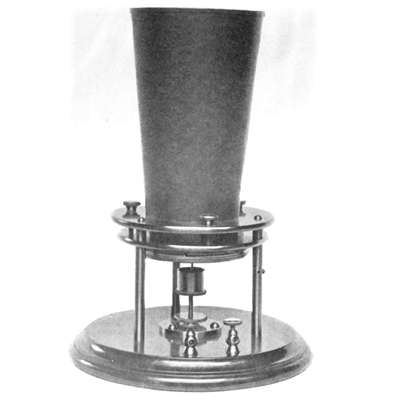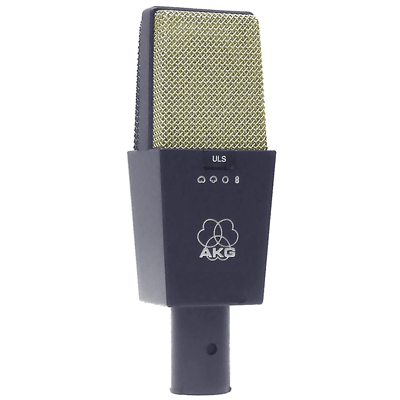Chapter Two: Studio Gear

3. Microphones
Overview
Microphones (typically shortened to mics—not spelled, but pronounced mikes) are a type of transducer, turning minute changes in air pressure into equivalent fluctuations of electrical current. They are in some sense the opposite of loudspeakers, which do the same in reverse. In fact, if you were stranded on a desert isle with only a speaker, you could use it as a microphone, mimicking a moving coil type of mic. Composers, while not needing the same level of expertise in mic'ing that audio engineers do, need to learn as much as possible if they are recording sound samples for their compositions. Poorly recorded sound files only get worse when manipulated during the compositional process—you cannot erase excessive room ambience, or distortion, or phase cancellation caused by poor time alignment, or the choice of the wrong mic pattern for a particular task. In addition, concert setups for electroacoustic works that involve live processing and/or amplification of performers also require knowledge of proper mic selection and placement. Below, we will discuss some of the basics of microphones and mic'ing techniques.
Parts of a microphone
Body: the body holds all the components listed below, the electronics, protective screen, acoustic baffles and/or physical isolators, as well as the connector (usually male XLR for pro mics).
Diaphragm: the microphone equivalent of your eardrum, in that it is a small (.2" to 2"), usually circular-shaped piece of super-thin material (such as Mylar) that vibrates sympathetically when sound waves interact with it. It is attached directly the transducing mechanism that produces electrical signals, as in the case of a condenser mic, or it is physically attached to something else that produces the fluctuating current, as in a moving coil microphone. Mics with diaphragms approximately 1" or larger are referred to as large-diaphragm mics, which are almost always side-address.* They have, in general, a more balanced frequency response, less self-noise and a slower transient response. Microphones that work on the pressure-gradient principle, which are virtually all directional mics, will have both sides of their diaphragms open to external sound pressure, some with sound entering from behind coming through a time-delaying acoustic channel called a labyrinth.
Capsule: sometimes called an element, the capsule holds the diaphragm, a stationary backplate, a diaphragm tensioning ring, and the diaphragm housing. In addition, it contains the electrodes that conduct the current to the mic electronics or output, attached to either the center or edge of the diaphragm, which actually affects their low- and high-end response. Edge-terminated capsules have a better low-end response, center-terminated capsules have better high-ends and are more resistance to plosive overload. Some microphones have back to back capsules that allow them to be set to multiple directional patterns, with shared (e.g. AKG C414) or separate (e.g. Neumann) backplates. Other microphones are sold with two or more interchangeable capsules for different response patterns. Ribbon microphones do not technically have capsules, but instead have a thin ribbon housed between two magnetically polarized baffles.
Ports or vents: the opening(s) in the microphone to let the sound waves in, often covered by a protective grille. Some ports allow sound in behind the diaphragm, as mentioned above. While most microphones are described as front address — meaning the diaphragm is perpendicular to the front of the microphone, and the front of the microphone is pointed toward the source — some microphones, particularly those designed for stereo pairing, are side address, where the diaphragm is parallel to the sides, and vents are located on one or both sides of the microphone. AKG C414's and Neumann U87's are side address, and they can receive sound from both front and back.
Windscreen: A removable microphone accessory, often made of foam and slipped onto the microphone. It is designed to reduce the low-frequency effect of wind blowing across a microphone's grille or port. For frequent outdoor recording, a large all-enclosing version of this is called a blimp or zeppelin, and the ragged artificial fur appearance of some models has led to the nomenclature "dead cat" or "dead kitten." Windscreens are also handy for keeping spit out of your expensive mic and making presidents look important, but pop filters, which stand off farther from the mic, are better suited to reducing speech plosives.
Shockmount: a clip (sometimes called a spider mount) attached to a mic stand that holds the mic in a cradle of elastic bands, springs or other flexible material to reduce low frequency vibrations (called rumble) from the floor being transmitted up through the stand, from such sources as passing trucks, HVAC, foot tappers, and so forth. These often come custom-fit to specific microphone models.
 Floyd L. Darrow/public domain
Floyd L. Darrow/public domain
BELL LIQUID TRANSMITTER
Alexander Graham Bell invented this improved telephone transmitter, essentially a microphone, which has a fine charged wire attached to a parchment diaphragm. The wire dips down into a brass cup containing a mild acid solution that forms the other end of the circuit. Vibrations of the diaphragm cause the wire to rise and fall in the acid, thereby creating an oscillating current as the circuit's resistance changes.

SHURE SM57 FRONT ADDRESS MICROPHONE
The Shure SM57 is still the most widely used microphone in the world, along with its sibling, the SM58, which is more suited to vocal sources. A dynamic microphone with a cardioid pattern and a balanced output, it was released in 1965 and has been used in pairs for virtually every US WH presidential address, along with its iconic windscreen since.

AKG C414 SIDE ADDRESS MICROPHONE
The AKG 414 microphone, still in wide use, is a large diaphragm condenser microphone. It is extremely flexible in the studio because it offers multiple polar pickup patterns that are easily switchable. It was first released in 1971 as the C414. The sequence of C414 models has led to electronic switches, better handling of high SPL's, and a lower noise floor.